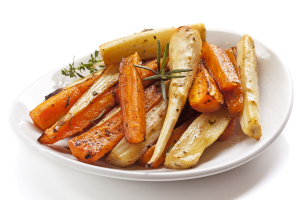 As the temperature dips and the days get shorter it gets a little more challenging to eat a healthy diet. On a chilly day, it sometimes feels easier to curl up on the couch with a bowl of canned soup. And with the decrease in light, we tend to eat more food, specifically carbohydrates — starches and sugars.
As the temperature dips and the days get shorter it gets a little more challenging to eat a healthy diet. On a chilly day, it sometimes feels easier to curl up on the couch with a bowl of canned soup. And with the decrease in light, we tend to eat more food, specifically carbohydrates — starches and sugars.
Some scientists say that we consume an additional 200 calories per day during the fall. When you think about it, it makes sense from a biological standpoint. Our ancestors would put on weight in the fall while food was abundant from the harvest and it was just smart to get ready for the winter famine.
Another reason that healthy eating can be so difficult in the winter is the lack of sunlight. As it gets darker earlier, we get less exposure to the sun, which can lead to a drop in serotonin. Serotonin is the “feel good” neurotransmitter and that drop can cause depression and food cravings. Spend time outdoors as much as you can. Perhaps go for a walk during your lunch break or even move your desk close to a window if you can.
 You can boost serotonin with healthy carbs like root vegetable, grains and fresh fruit. There are some great seasonal choices to keep you well-nourished and hopefully away from sugar and refined carbs, winter squash, parsnips, Brussels sprouts, cauliflower, rutabaga, beets and sweet potatoes have their own natural sugar. I like to roast them because it brings out their natural sweetness!
You can boost serotonin with healthy carbs like root vegetable, grains and fresh fruit. There are some great seasonal choices to keep you well-nourished and hopefully away from sugar and refined carbs, winter squash, parsnips, Brussels sprouts, cauliflower, rutabaga, beets and sweet potatoes have their own natural sugar. I like to roast them because it brings out their natural sweetness!
Check out my newsletter at www.ruthclarkrd.com/newsletter/ for my recent newsletter which is chock full of great recipes for these autumn veggies.

